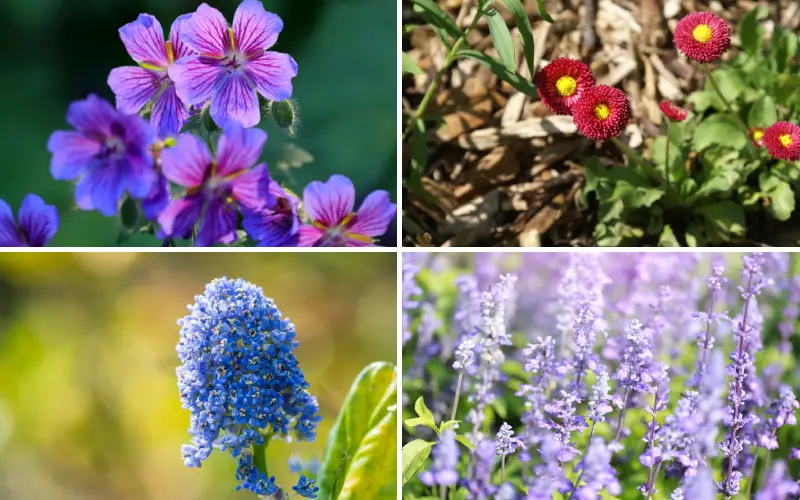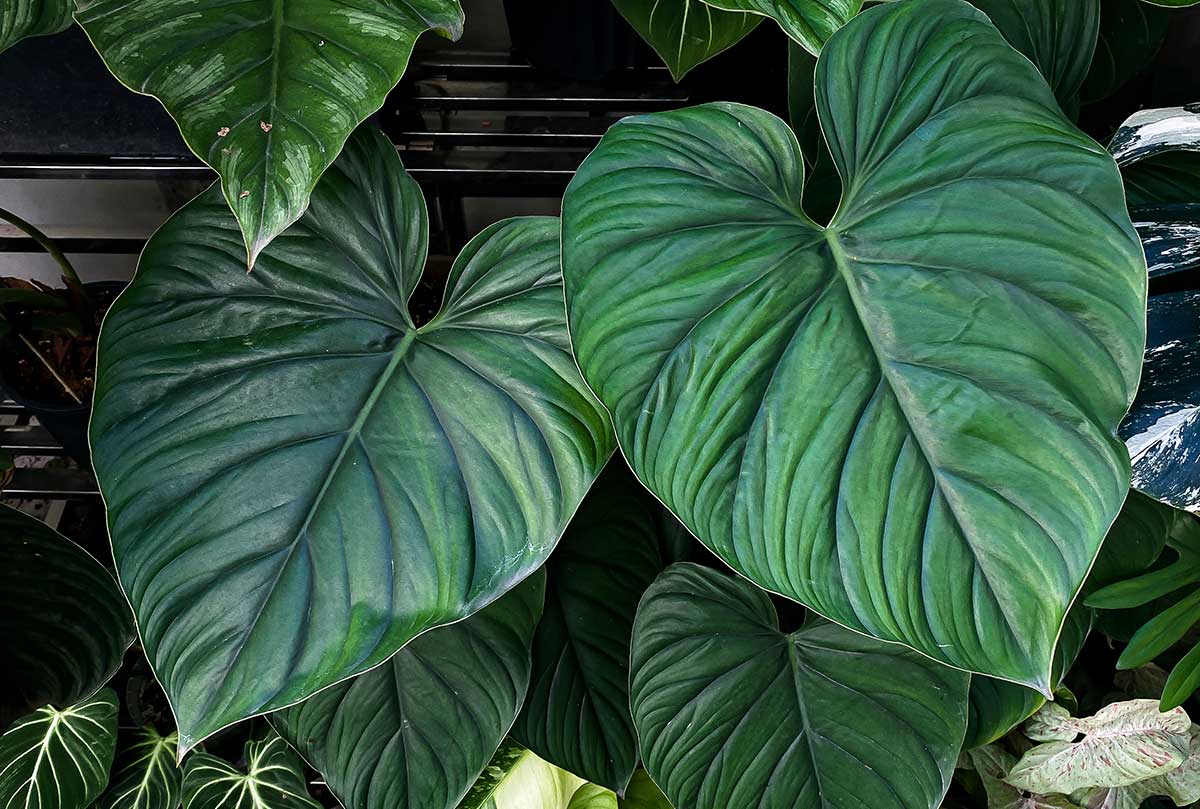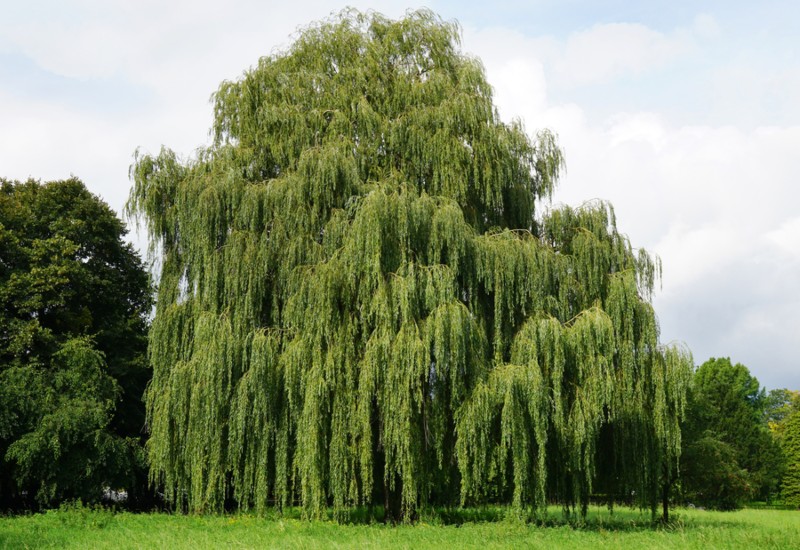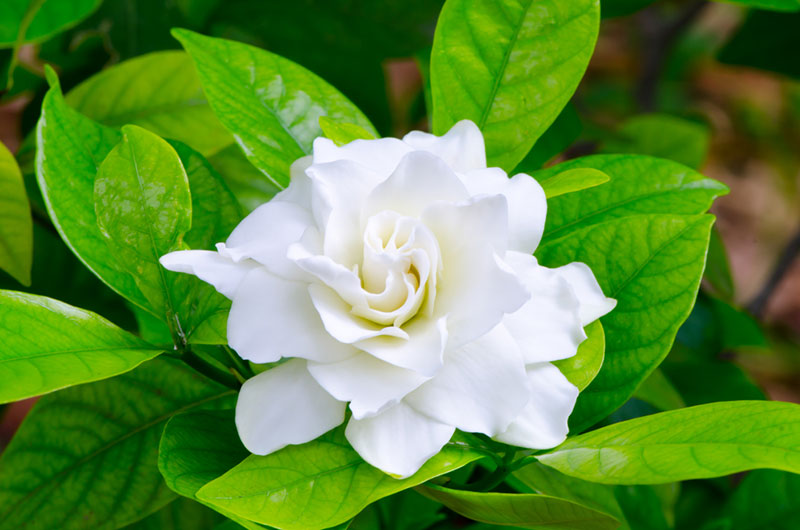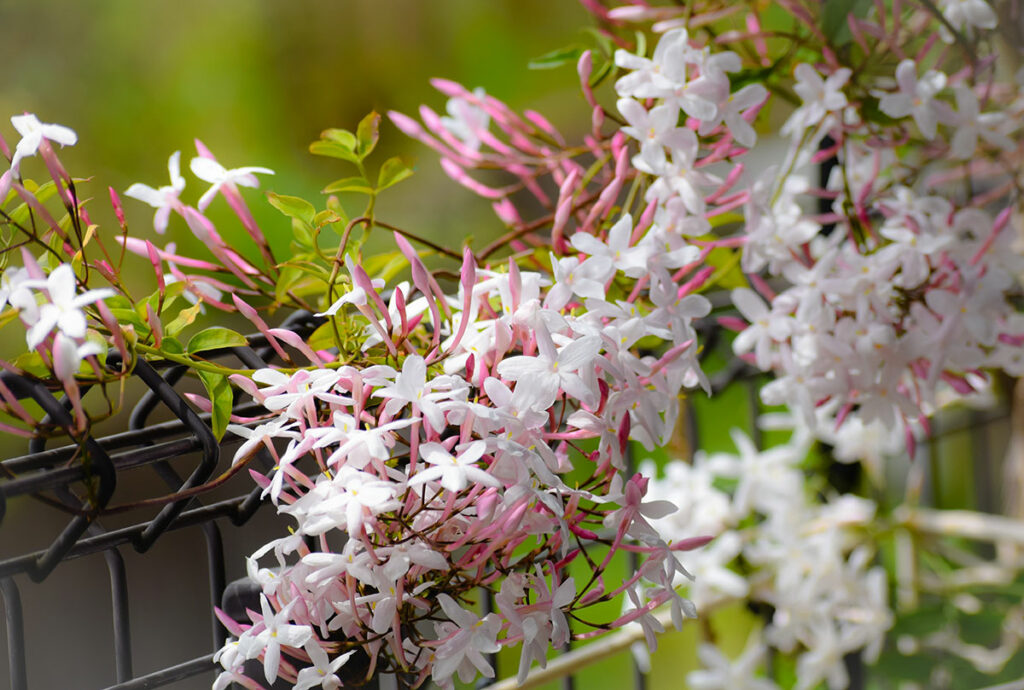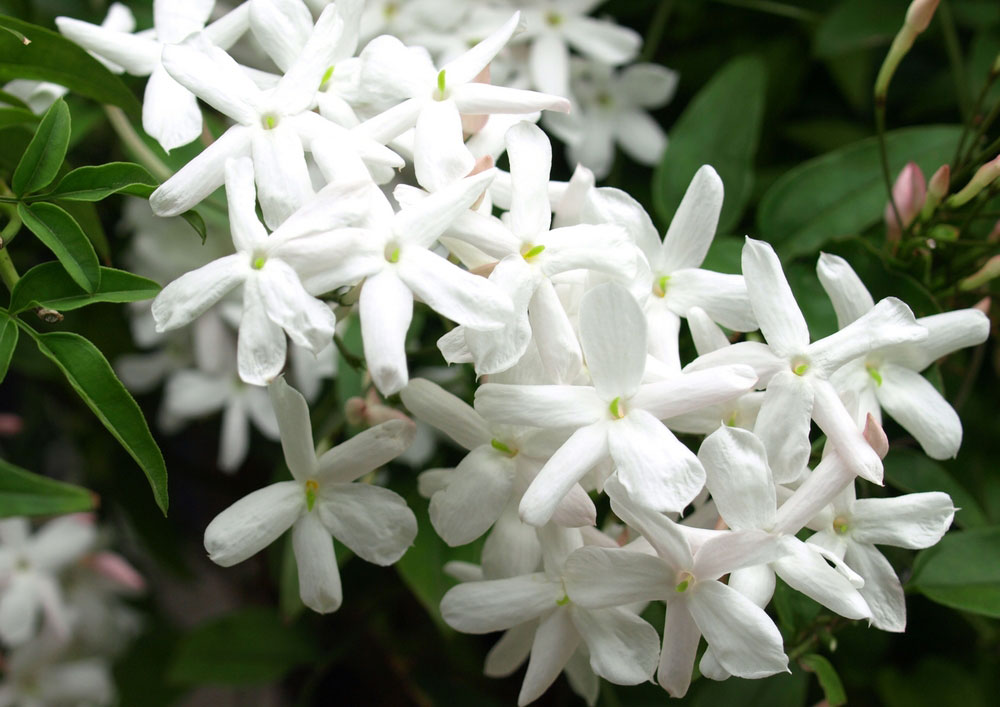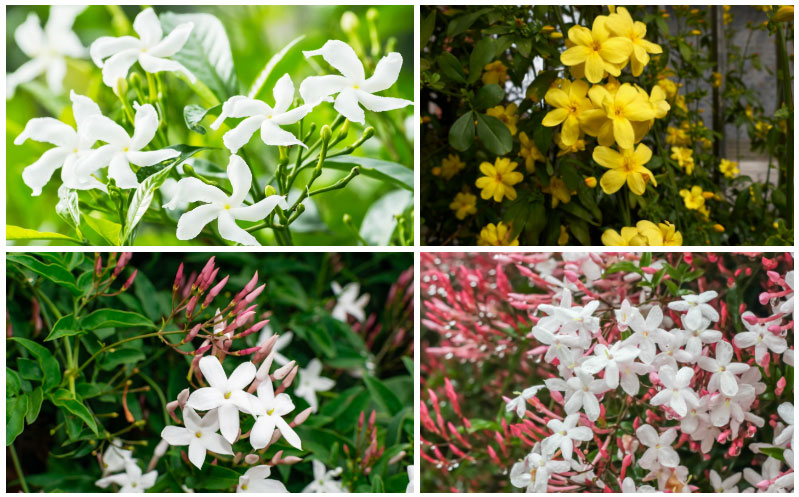
Jasmine is a plant that I absolutely adore. The scent of the flowers and the way the blooms look on the plants is something that I must have in my gardens. Overall, there are more than 200 different species of the plant, but most are native to areas with a tropical climate that has warmer temperatures than can be achieved in the hardiness zones found in the United States.
Most of the varieties have white flowers that will look great in any garden. Most of these varieties grow well in hardiness zones six through 10, and they are relatively easy to care for.
Common jasmine (Jasminum officinale)
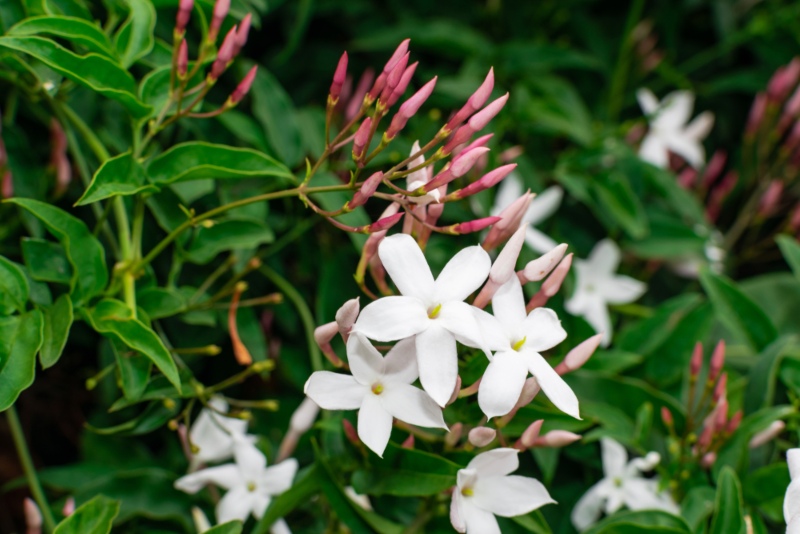
The common Jasmine is a vining shrub that has a very fragrant smell that is appealing. It produces clusters of three to five white flowers from late summer to early fall. The plant can grow to be 15 feet tall, and it will do best in full-sun conditions. This fast-growing vine is easy to control.
Showy jasmine
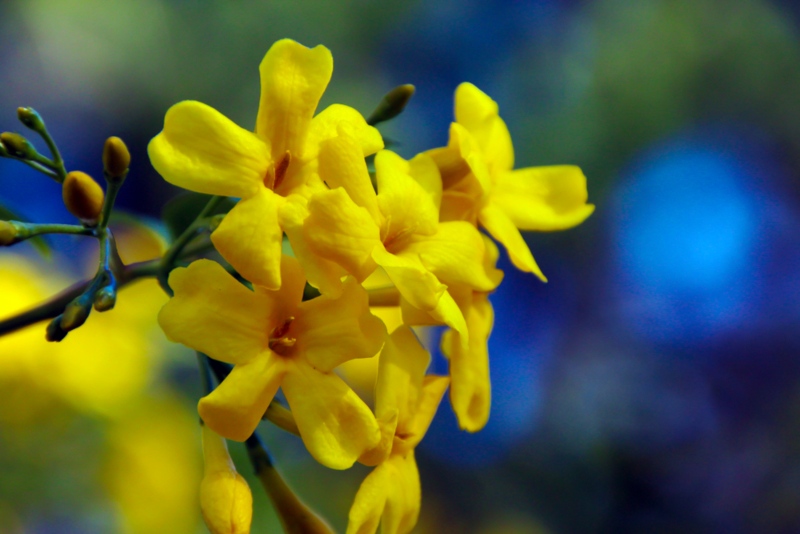
The showy jasmine is a plant that has faint yellow blooms. It is a fast-growing shrub that can grow to be four feet tall. The blooms can be seen during the spring and the summer months, and they are often seen in zones seven to nine. Full sun is preferred for optimal growth.
Spanish jasmine (J. grandiflorum)
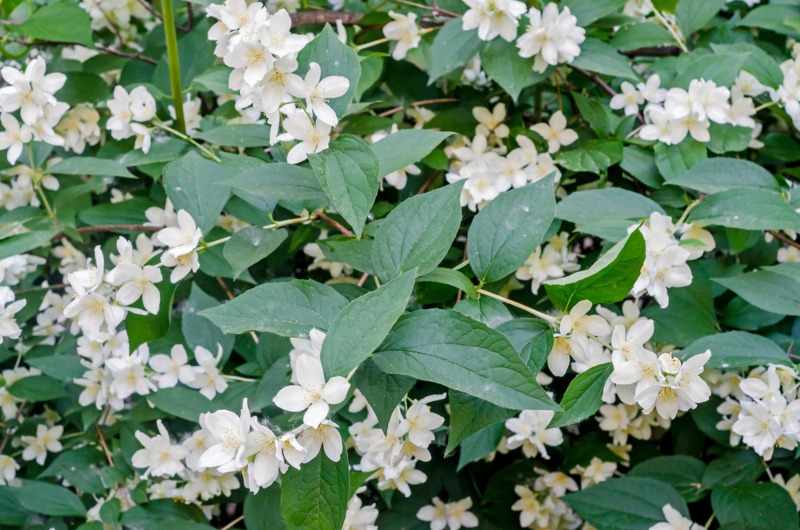
Spanish jasmine, which is more commonly called royal jasmine, is a quick-growing plant that can reach heights of 15 feet or more when it is mature. The plant blooms from midsummer until the middle of fall, and it can be seen in zones seven to 10. It needs full sun to grow at least for a few hours a day.
Jasminum Sambac (Arabian Jasmine)
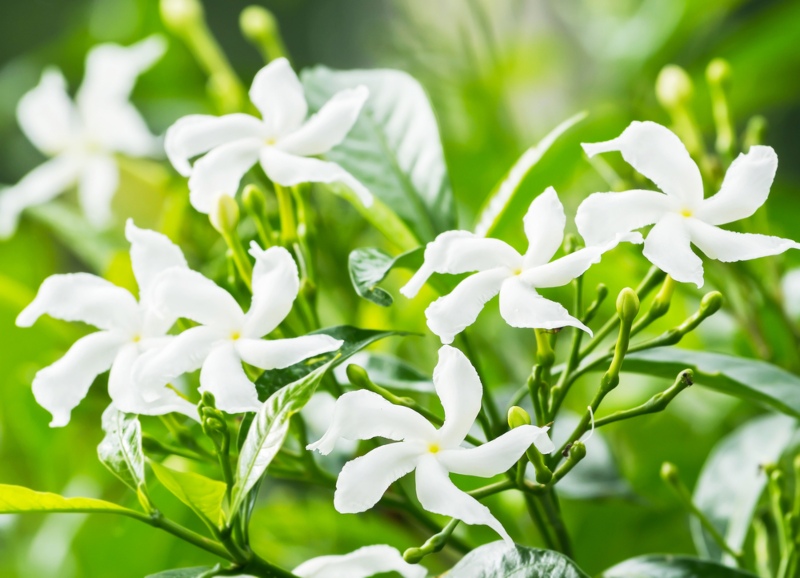
Arabian jasmine is actually the national flower of the Philippines. It is a vine-like plant that can grow to be 10 feet. It does well in full to partial sun, and the plant only blooms for 24 hours. This is the type of jasmine that is used to make tea; the flowers are also used to make leis.
Winter jasmine (Jasminum Nudiflorum)
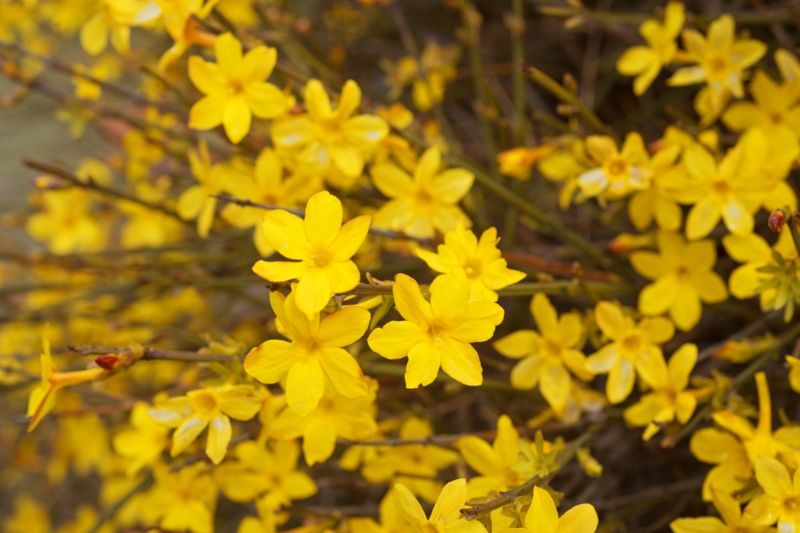
Also known as hardy Jasmine, this is a type of jasmine that can grow in colder regions without an issue. It does well in US hardiness zones six to 10, and it can quickly grow to be up to 15 feet tall when it is mature. It should be grown in well-drained soil and full sun.
Jasminum mesnyi
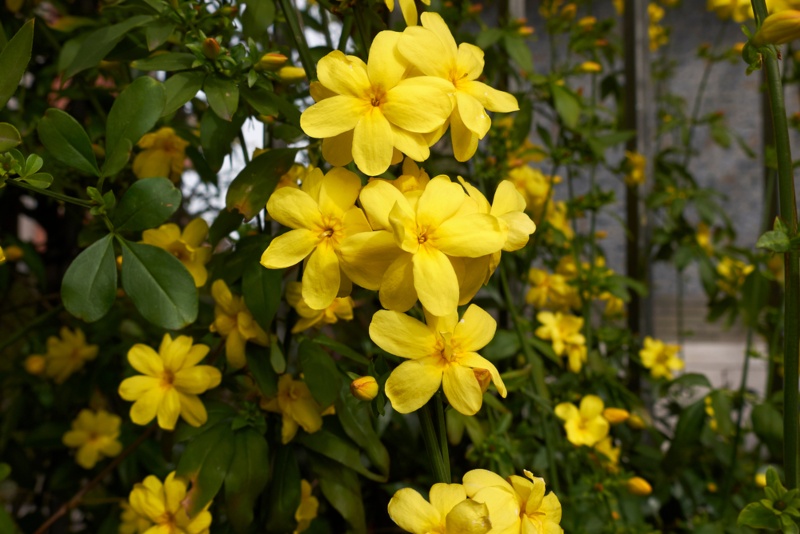
This is one of the few varieties of jasmine that do not have white blooms; in fact, the flowers are yellow and slightly larger than most other options. They are rare in the US, and they only grow in zones eight to 11. The plant will need to be pruned because it can grow quickly to heights of up to six feet.
Jasminum Polyanthum (Pink Jasmine)
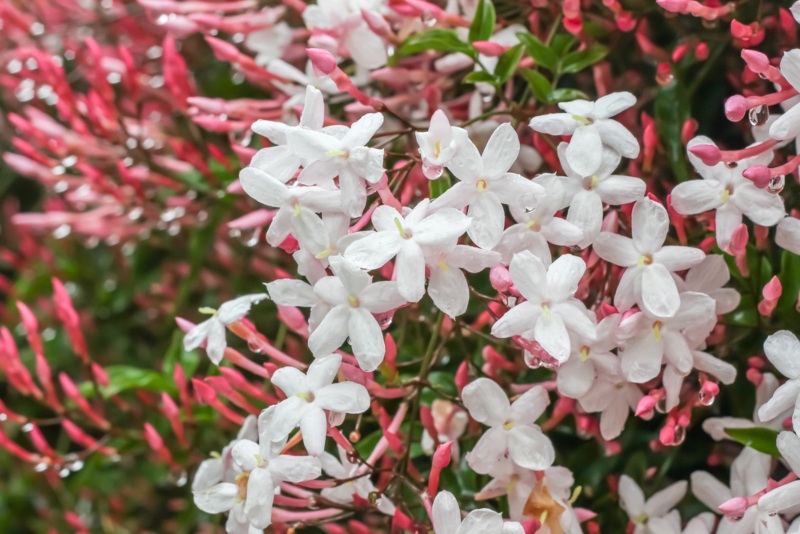
Pink jasmine is a fast-growing vine that will thrive in growing zones eight through 11. It can grow to be taller than 25 feet, so you will want it to grow using a trellis for support. It does well in full sun or partial shade. The flowers have a slight pinkish tint that makes them stand out.
Trachelospermum asiaticum (Asian Star jasmine)
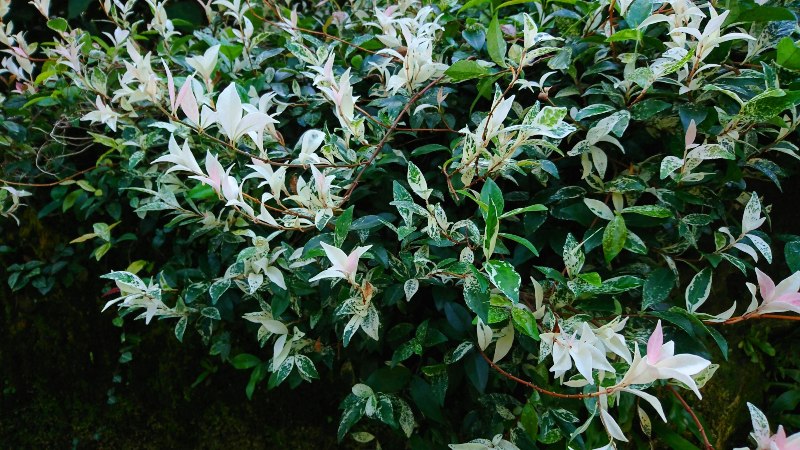
This is a plant that originates from Asia. It will grow in the US in hardiness zones eight to 10, and it does best in well-drained soil and full sun. The blooms are more of a cream color than pure white, but they are star-shaped, and they tend to grow close together in a cluster.
Cestrum Nocturnum (Night-Blooming Jasmine)
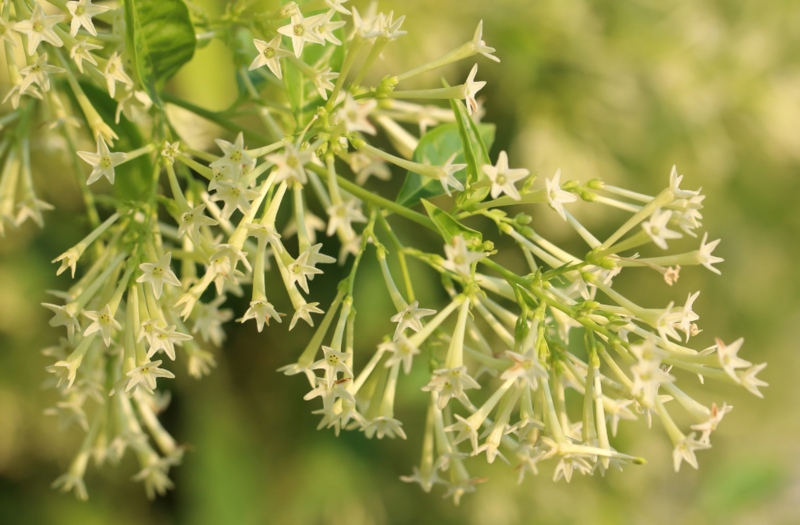
The dark green foliage and the bright star-shaped flowers of this variety make it easy to recognize. It does grow well in full sun and soil that is fertile and well-drained. It tends to bloom from spring until fall. The scent of this plant is strong; in fact, it can easily cause an allergic reaction in some.
Gardenia Jasminoides (Cape Jasmine)
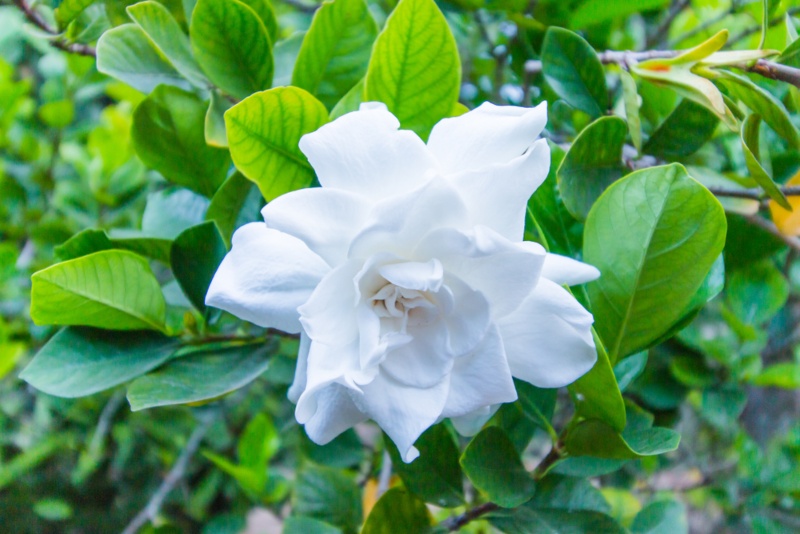
Cape jasmine is a plant that grows well in hardiness zones six to 11. This is a plant that also has a powerful scent that is often described as being almost heavenly. It needs full to partial sun, lots of water, and well-draining soil to grow. The seed pod changes color as it grows until the flowers can be seen.
Related Articles

